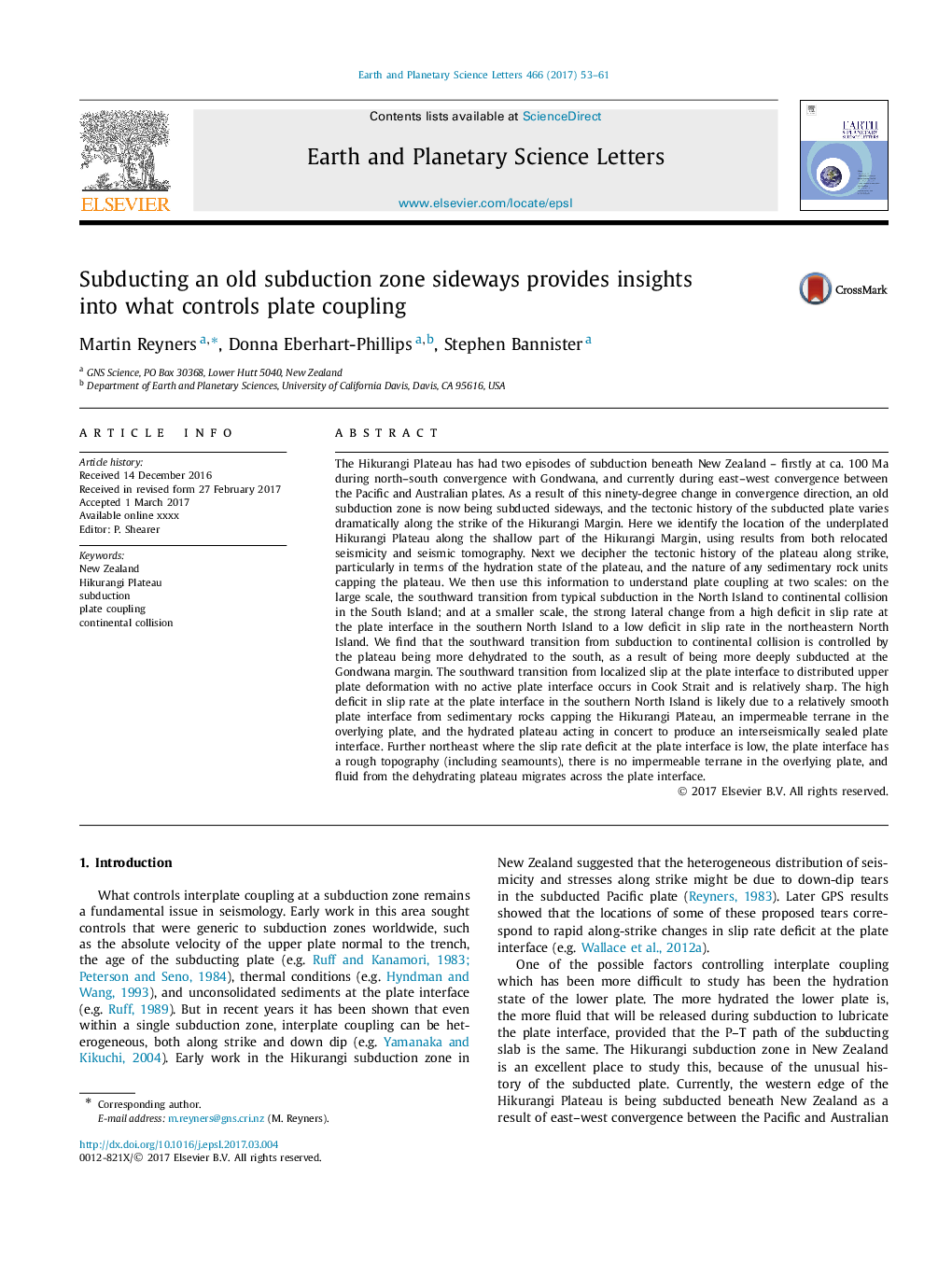| کد مقاله | کد نشریه | سال انتشار | مقاله انگلیسی | نسخه تمام متن |
|---|---|---|---|---|
| 5779958 | 1634690 | 2017 | 9 صفحه PDF | دانلود رایگان |
عنوان انگلیسی مقاله ISI
Subducting an old subduction zone sideways provides insights into what controls plate coupling
دانلود مقاله + سفارش ترجمه
دانلود مقاله ISI انگلیسی
رایگان برای ایرانیان
کلمات کلیدی
موضوعات مرتبط
مهندسی و علوم پایه
علوم زمین و سیارات
علوم زمین و سیاره ای (عمومی)
پیش نمایش صفحه اول مقاله

چکیده انگلیسی
The Hikurangi Plateau has had two episodes of subduction beneath New Zealand - firstly at ca. 100 Ma during north-south convergence with Gondwana, and currently during east-west convergence between the Pacific and Australian plates. As a result of this ninety-degree change in convergence direction, an old subduction zone is now being subducted sideways, and the tectonic history of the subducted plate varies dramatically along the strike of the Hikurangi Margin. Here we identify the location of the underplated Hikurangi Plateau along the shallow part of the Hikurangi Margin, using results from both relocated seismicity and seismic tomography. Next we decipher the tectonic history of the plateau along strike, particularly in terms of the hydration state of the plateau, and the nature of any sedimentary rock units capping the plateau. We then use this information to understand plate coupling at two scales: on the large scale, the southward transition from typical subduction in the North Island to continental collision in the South Island; and at a smaller scale, the strong lateral change from a high deficit in slip rate at the plate interface in the southern North Island to a low deficit in slip rate in the northeastern North Island. We find that the southward transition from subduction to continental collision is controlled by the plateau being more dehydrated to the south, as a result of being more deeply subducted at the Gondwana margin. The southward transition from localized slip at the plate interface to distributed upper plate deformation with no active plate interface occurs in Cook Strait and is relatively sharp. The high deficit in slip rate at the plate interface in the southern North Island is likely due to a relatively smooth plate interface from sedimentary rocks capping the Hikurangi Plateau, an impermeable terrane in the overlying plate, and the hydrated plateau acting in concert to produce an interseismically sealed plate interface. Further northeast where the slip rate deficit at the plate interface is low, the plate interface has a rough topography (including seamounts), there is no impermeable terrane in the overlying plate, and fluid from the dehydrating plateau migrates across the plate interface.
ناشر
Database: Elsevier - ScienceDirect (ساینس دایرکت)
Journal: Earth and Planetary Science Letters - Volume 466, 15 May 2017, Pages 53-61
Journal: Earth and Planetary Science Letters - Volume 466, 15 May 2017, Pages 53-61
نویسندگان
Martin Reyners, Donna Eberhart-Phillips, Stephen Bannister,